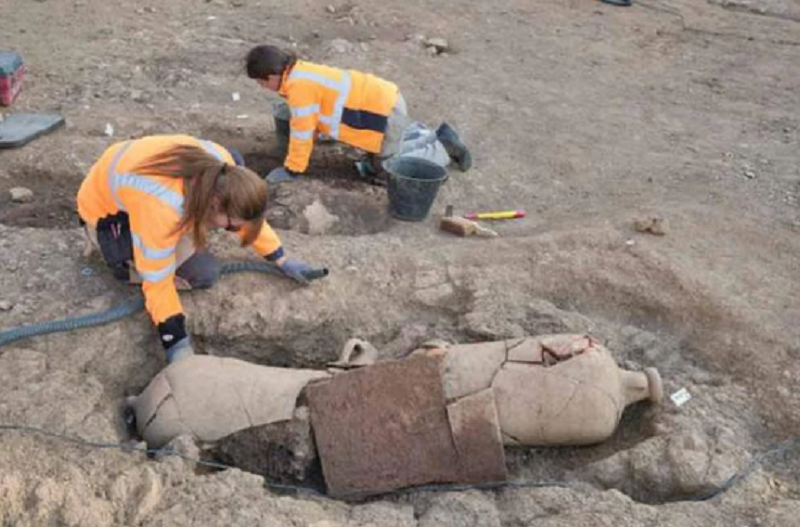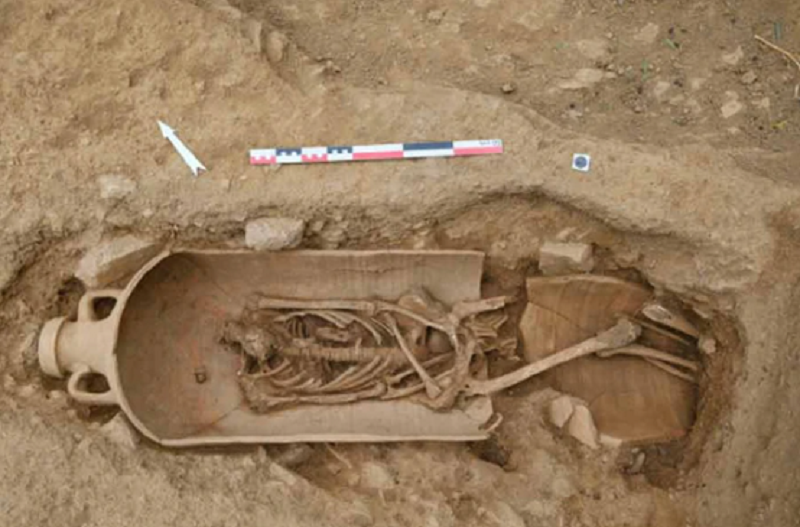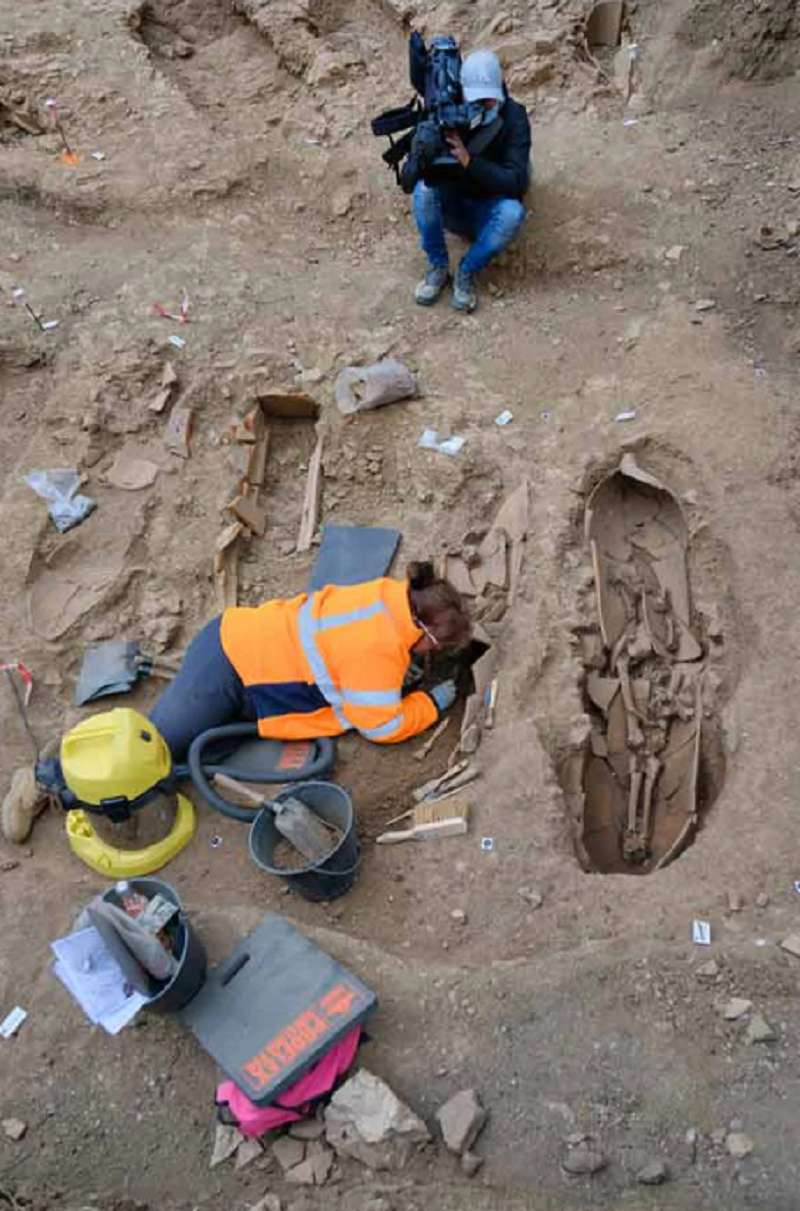Jars used to store wine, olive oil… were used to make coffins for 40 people in a strange ancient tomb in Corsica, a French island in the Mediterranean.
Exploratory excavations were conducted in the village of Île-Rousse, where several previous archaeological discoveries helped discover the above-mentioned ancient tomb. The cemetery has been dated to the 1st century AD, located behind the town’s parish.

A “ceramic vase tomb” was excavated – Photo: INRAP
According to scientists from the French National Institute for Research in Archaeological Conservation (INRAP), the type of giant ceramic jar used as coffins in these 2,000-year-old tombs is called amphorae, with a narrow neck and two handles. quite common in many ancient civilizations in the region. It seems that they are reused from jars containing wine, olive oil, salt water, etc. which Cosricans bought from Carthaginian merchants in large quantities.

Ceramic jars certainly help preserve remains very well – Photo: INRAP
Acient Origins said that most notably, some stone tombs are covered or reinforced with terracotta slabs, which are also reused materials from Greek-Roman architectural tile roofs. Reviewing history, it is true that the Romans occupied this island at a time that coincides with the dates of the ancient tombs. It appears that the islanders reused materials from Roman houses rather than this tomb belonging to the Romans.

Photo: INRAP
This is considered a surprise because the area where the cemetery was discovered was said to be very deserted throughout the island’s history. But a complex series of burials, large in number but not so far apart in time, shows that this village showed a much greater population density in the mid-1st century AD. compared to imagination.
According to INRAP, the reason for this strange burial practice is still unknown. Archaeological investigations around the area continue due to the discovery of a unique ancient tomb site, further reinforcing the belief that Corsica is truly the “treasure island” of the archaeological world, with many relics and artifacts being preserved. waiting to be discovered. The special location of the island could have helped it become a rich trading port in the past, not as desolate as it is today.


